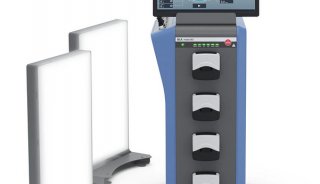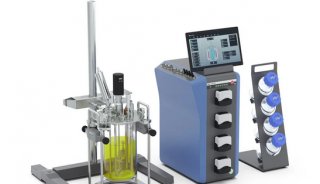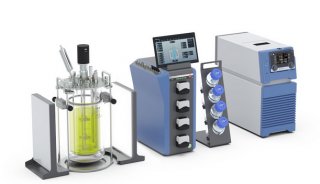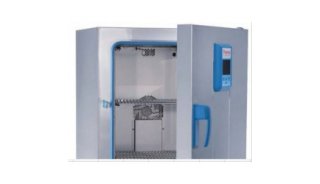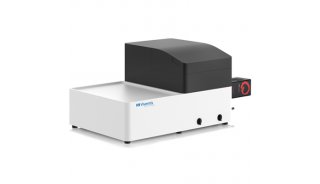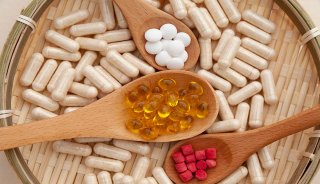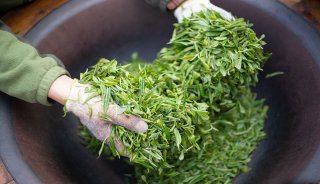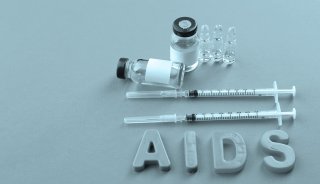Protocol to Count Cell Number of Preimplantation Embryos
Protocol to Count Cell Number of Preimplantation Embryos
using Nuclear Staining with Hoechst 33342 or DAPI
![]() Introduction
Introduction
The following is a simple procedure for determining cell number inpreimplantation embryos. Note that DAPI has higher photostability than Hoechst 33342.
Other DNA-binding dyes can also be used including propidium iodide and ethidium bromide. Staining with propidium iodide is a little more complicated because the dye also stains RNA and an RNAse step is often added. The Molecular Probes website has much useful information on the properties of various DNA binding dyes.
![]() Preparation of Embryos
Preparation of Embryos
1. Remove embryos from embryo culture medium and wash 2 times in 100 µl drop of PBS containing 1 mg/ml polyvinylpyrrolidone (PVP) by transferring the embryos from drop to drop.
2. (Optional) Fix embryos in 100 µl drop of paraformaldehyde solution [4% (w/v) in PBS, pH 7.4] for 1 h at room temperature. Wash the embryos 3 times in 100 µl drop PBS/ PVP by transfering the embryos from drop to drop.
![]() Preparation of Hoechst 33342 dye
Preparation of Hoechst 33342 dye
(all solutions are made in light-proof tubes - wrapping in aluminum foil is sufficient)
Stock 1: Dilute 25 mg of Hoechst 33342 (Sigma B2261) in 2.5 ml of distilled water. The concentration of this solution is 10 mg/ml. Store at 4 C.
Stock 2: On the day of use, dilute 5 µl of Stock 1 solution in 10 ml of PBS containing 1 mg/ml polyvinylpyrrolidone. The concentration is 5 µg/ml.
Working Solution: Dilute 200 µl of the Stock 2 solution in 800 µl of PBS-PVP for a final concentration of 1 µg/ml.
![]() Preparation of DAPI
Preparation of DAPI
(all solutions are made in light-proof tubes - wrapping in aluminum foil is sufficient)
Stock solution: Dissolve 0.1 mg DAPI in 10 ml deionized water, saline, PBS or dimethylformadide. Store at 4 C for 6 months. Note: It takes several hours for DAPI to dissolve into solution.
Working solution: On the day of use, add 100 µl stock solution to 900 µl PBS/PVP. Use once and discard.
![]() Staining the Embryo (this step should be performed with the lights dimmed)
Staining the Embryo (this step should be performed with the lights dimmed)
1. Transfer embryos to a 50 µl microdrop of working solution.
2. Stain the cells for 10 minutes.
3. Wash embryos two times in 100 μl drops of PBS-PVP transferring the embryos drop to drop.
![]() Mounting Embryos to Slides
Mounting Embryos to Slides
1. Prepare clean microscope slides by dipping in a 1:10 poly-l-lysine solution (Sigma P8920) for 2 minutes. Allow the slides to dry.
2. Transfer the embryos to a poly-l-lysine coated slide in a minimal volume and allow embryos to dry for 15 minutes at room temperature. Use a diamond pen to scratch a circle on the bottom of the slide around the area where the embryo is located.
3. Add a minimal volume (2-16 µl) of antifade solution (ProLongAntifade Kit; (Molecular Probes P-7481) over the area where the embryos were fixed.
4. Put a cover slip over the slide and allow it to dry for 2 hours in a dark compartment before counting the cells under the fluorescent microscope with a UV filter. Nuclei will appear blue. Count quickly as fading can be rapid.

Embryo stained with Hoechst 33342.
![]() What to Do When There are Too Many Cells to Count
What to Do When There are Too Many Cells to Count
Sometimes, the number of cells is too great to count accurately, especially if embryos are at later stages of development. There are two methods one can use to reduce this problem. The first is to place the slide with coverslip under a dissecting microscope and, while examining the embryo, press down on the coverslip with a pencil (eraser side) to spread the embryonic cells.
A more extensive dispersal can be achieved using the following procedure that was designed originally for doing chromosomal spreads (modification of a procedure of WA King, University of Guelph). Some of the cells may break but one should still be able to count individual nuclei.
1. After collecting the embryo from the drop, transfer the embryo into a 1% (w/v) sodium citrate solution for 3 minutes.
2. Place the embryo onto a clean glass slide in a minimum volume. Let the drop all but completely dry.
3. From a height of about 6 inches to a foot, drop 1-2 drops of freshly prepared 1:1 acetic acid: methanol vertically onto the embryo.
4. Mark a circle on the back of the slide to indicate the position of the embryo.
5. Let the slide dry and then stain with nuclear dye as usual.






